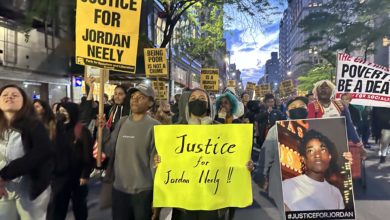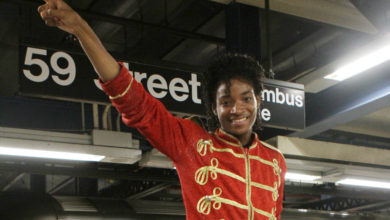Robert F. Williams, likely the greatest revolutionary North Carolina has so far produced, declared in the late 1950s that “the so-called courts lynch our people legally.” With Black inmates making up 55 percent of North Carolina’s death row in a state where only 22 percent of the population is Black, these words are just as true today as they were then.
In mid-December, however, a small victory was won when a judge ruled that the trials of Tilmon Golphin, Christina Walters and Quintel Augustine were tainted by “race-based decision making.” Although they are still facing life in prison, all three are now off death row.
Walters, a Native American woman, and Golphin and Augustine, who are Black, were able to successfully challenge their death sentences by proving that the state manipulated the jury selection process to reduce the presence of Black jurors. Appeals on these grounds are allowed under North Carolina’s Racial Justice Act.
The case centered on the prosecution’s racist use of peremptory challenges, which allow legal teams to strike a given number of people from a jury pool. In the three cases in question, peremptory strikes were used by the state between two and four times more often when dealing with prospective Black jurors than white jurors. The discovery of notes written by prosecutors was crucial. In the notes, a white former drug dealer was declared “a fine guy,” while a Black woman with a clean record was objectionable because she lived in a “bad area.”
This is the second successful application of the Racial Justice Act, which was passed in 2009. Originally, the law considered state-wide statistical evidence to be sufficient, but an amended version declares that statistical evidence alone is not enough and that the argument has to be specific to the defendant’s county. Although the 2012 modification was initially vetoed, enough Democrats voted with Republicans that the governor’s objection was overruled.
Despite these precedent-setting sentence reductions, racist mass incarceration remains very much alive in North Carolina, as it does in the rest of the country as well. The state has an enormous prison population, 373 per 100,000 residents, 57 percent of whom are Black. Anti-worker laws that take away the civil rights of people convicted of certain crimes have also caused 2.8 percent of the Black population of North Carolina to be legally disenfranchised.
A study by the University of North Carolina-Chapel Hill found that a defendant is 3.5 times more likely to be sentenced to death if their alleged victim was white. Only 40 percent of homicide victims in the state are white, but of the 31 people executed since the state reinstated the death penalty in 1977 more than 80 percent were convicted of killing white victims.
This enormous repressive apparatus is not simply the result of individual prejudice or well-intentioned policies gone awry. In the United States, mass incarceration is a cornerstone of national oppression—the economic, political and cultural subjugation of an entire nation of people. This oppression is directed especially sharply against the Black nation in states with a history of chattel slavery and Jim Crow apartheid like North Carolina.
National oppression is an inherent feature of capitalism. As capitalists in the imperialist countries scour the globe for new sources of labor, markets and resources to exploit, they inevitably find themselves in a position where they have to dominate other nations or peoples—by military means or otherwise—to keep their profits flowing. As members of oppressed nationalities are forced to immigrate to the oppressor countries, or as the oppressor nations expand their own borders and swallow other nations whole, national oppression is also further carried out within such imperialist countries themselves.
There is nothing inevitable about the anti-worker death penalty, the racist courts or the entire system of exploitation and oppression that it protects. Any injustice, no matter how monstrous, can be smashed by working-class solidarity and militant struggle.





